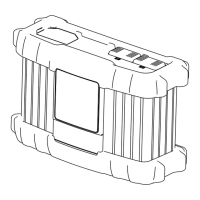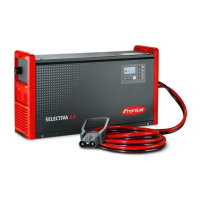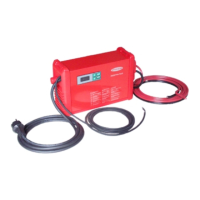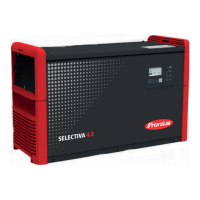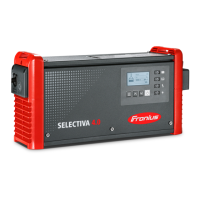Charging The "Charging" option is suitable for actuating a signal lamp for instance. While
charging is in progress, the corresponding relay picks up automatically.
Charge 50% Like the "Main charge finished" function, the relevant relay switches as soon as
the battery is 50% charged.
Charge 80% Like the "Main charge finished" function, the relevant relay switches as soon as
the battery is 80% charged.
Charging not
complete
The "Charging not complete" option lends itself to the actuation of an audible
alarm device, for example. If the battery is disconnected from the charger before
the charging process is complete, the relay switches for an adjustable time of 1
to 10 seconds.
Charge finish The "Charge finish" option is suitable for actuating a signal lamp for instance.
Once the configured charging characteristic is fully completed, the correspond-
ing relay picks up automatically.
Main charge fin-
ished
The "Main charge finished" option is suitable for actuating a signal lamp for in-
stance. When the main charge phase finishes, the corresponding relay picks up
automatically.
Common error
message
The "Common error message" option is suitable for actuating a signal lamp for in-
stance. Each time an error is detected, the relevant relay picks up automatically.
Common error +
warning
In the same way as for the "Common error" function, the corresponding relay
trips as soon as an error or warning is detected.
Signal lamp As an alternative to the charging lights, one or more suitable lamps can be con-
nected to the relay board to indicate the state of charge or operating status of
the charger. These lamps can be designed for a voltage of up to 30 V DC or up to
250 V AC on a starpoint-earthed network.
If the lamp circuit is potential-free, then the switching current must not exceed 4
A. A lamp that is actuated by the 230 V supply relay must be operated with an
output current of max. 1 A.
Immobiliser
device
If the charger is built into a vehicle as an on-board device, the optional immobil-
iser device will prevent the vehicle from being started unintentionally whilst char-
ging is taking place. This protects the vehicle, the battery and the charger leads
from damage.
61
EN

